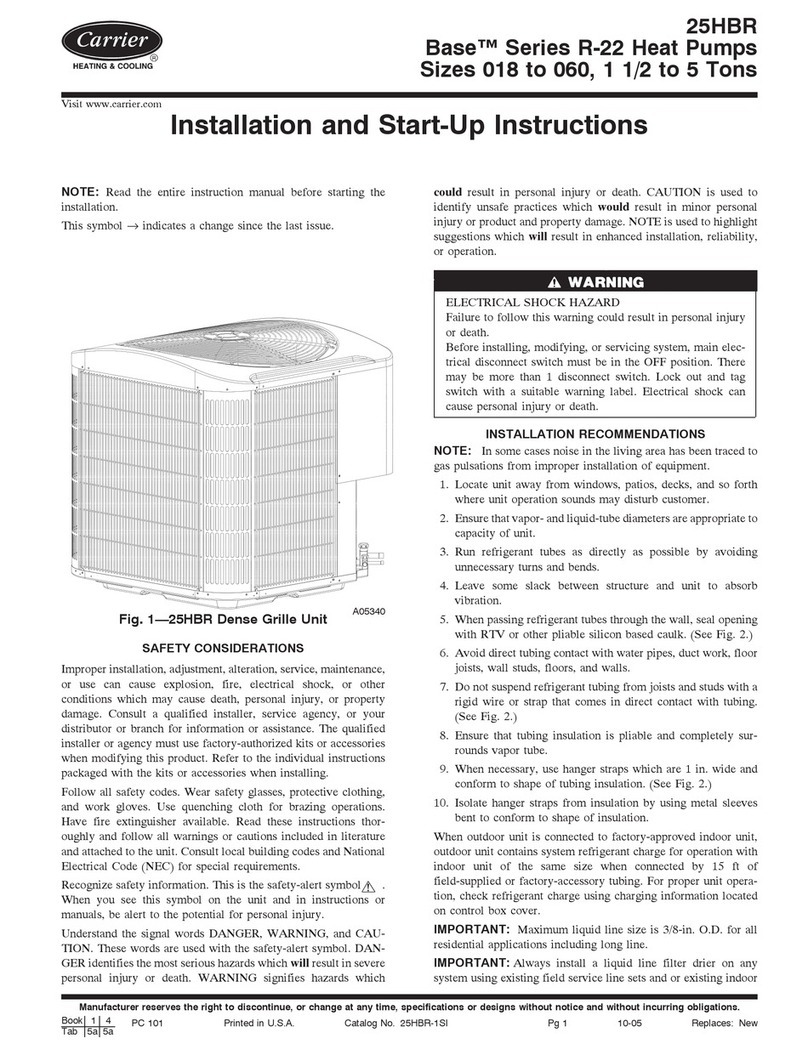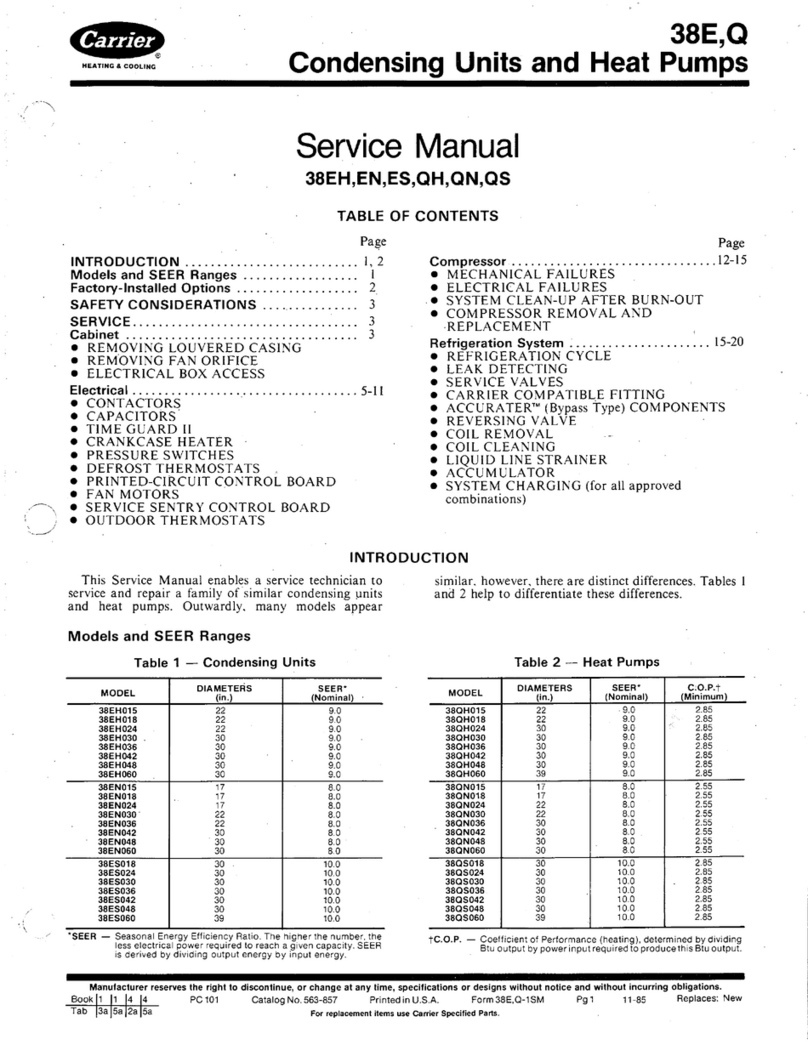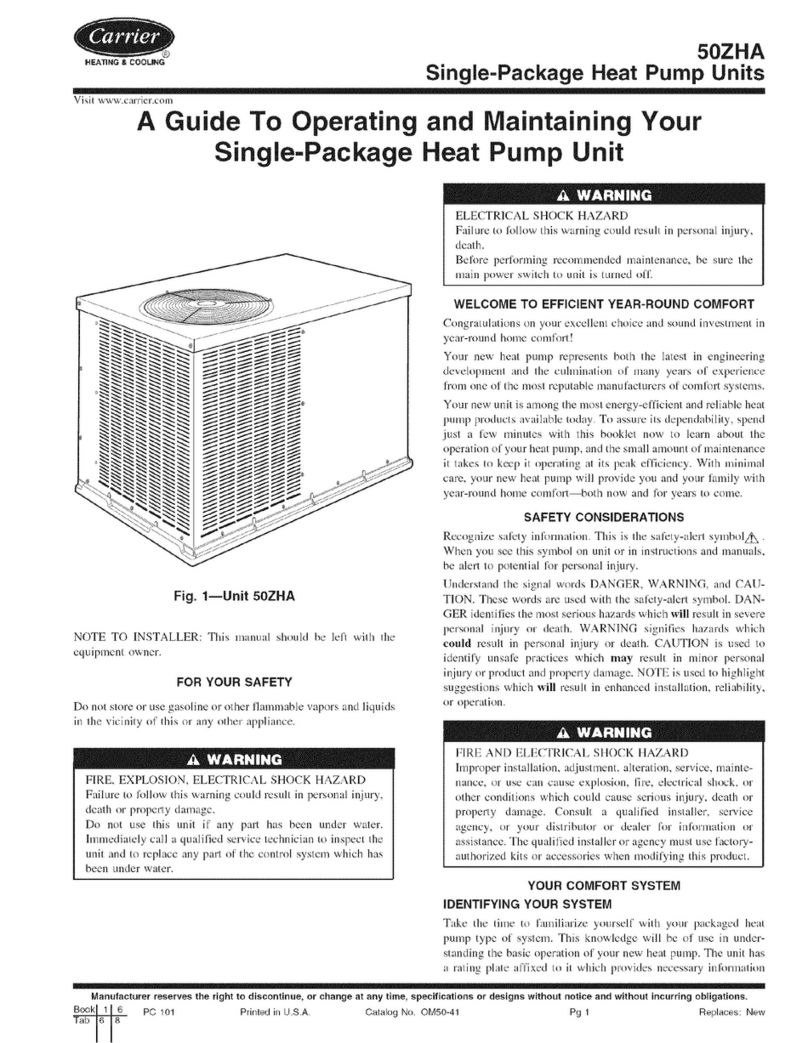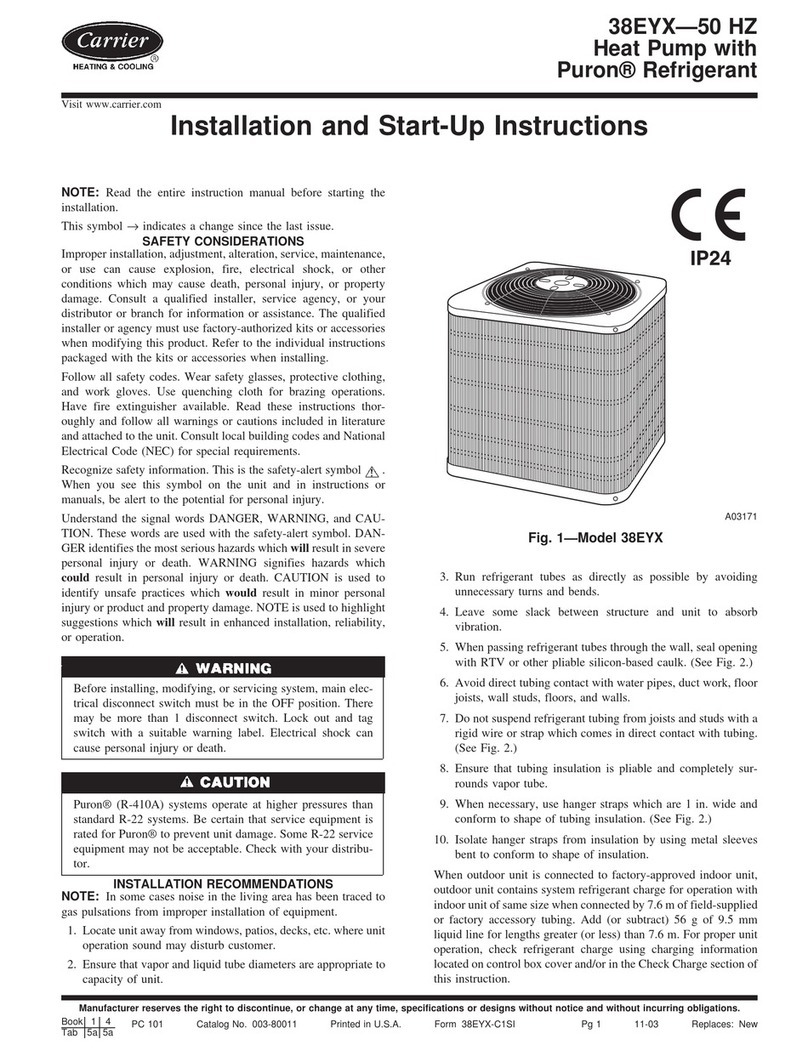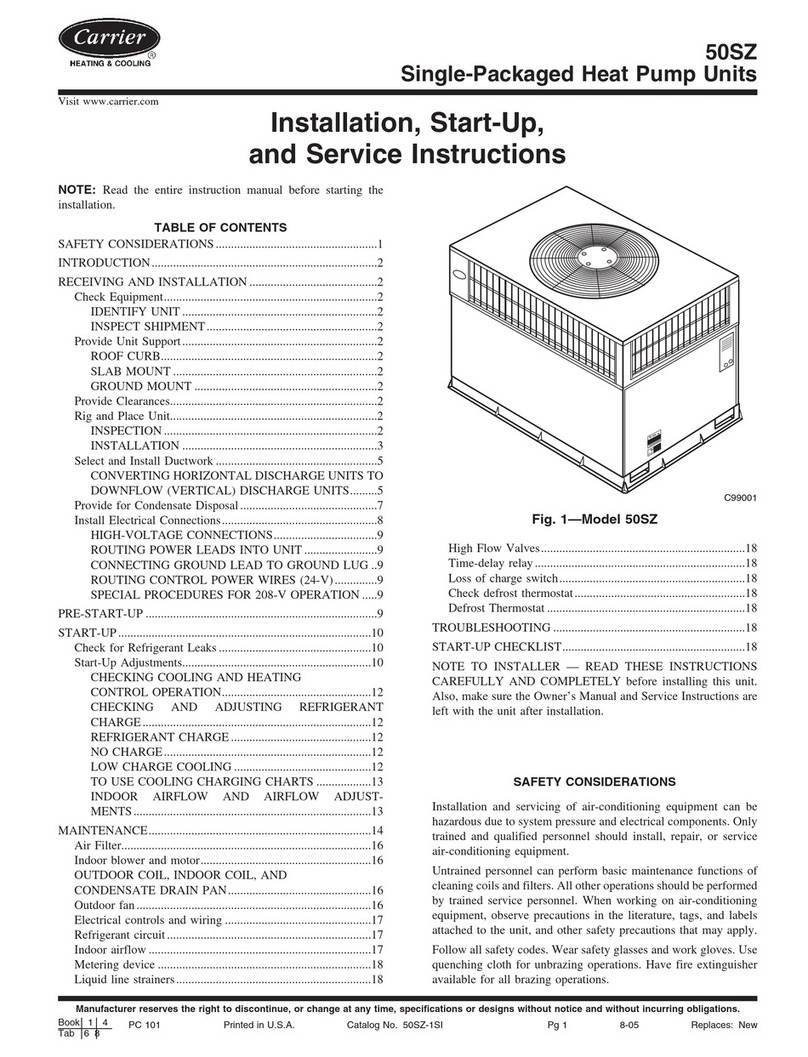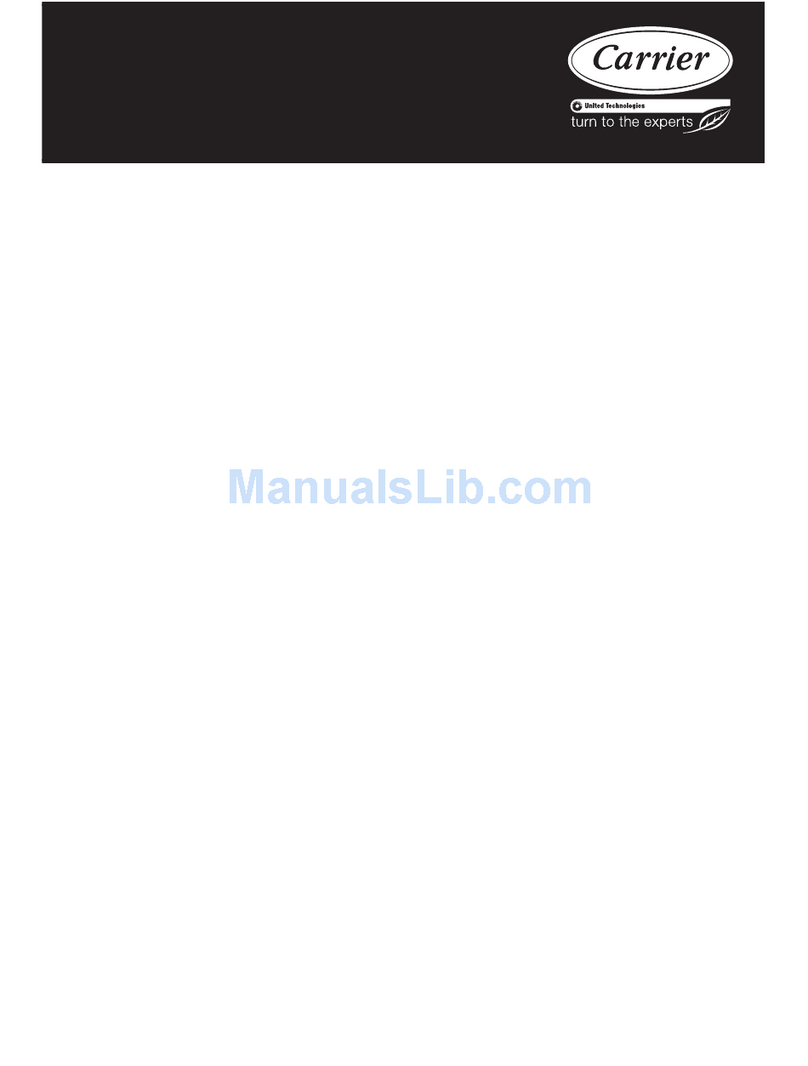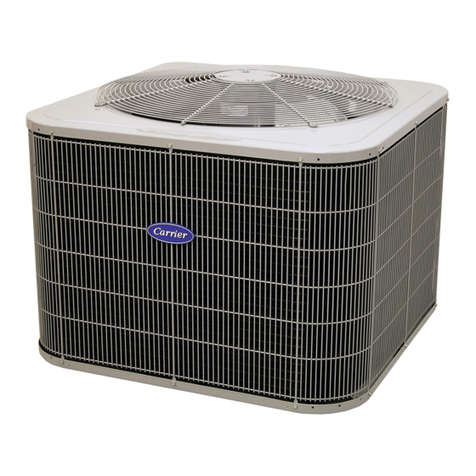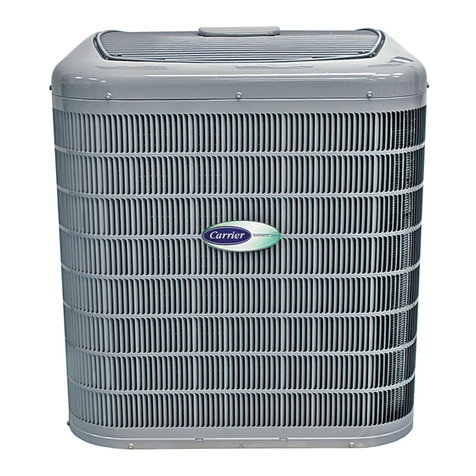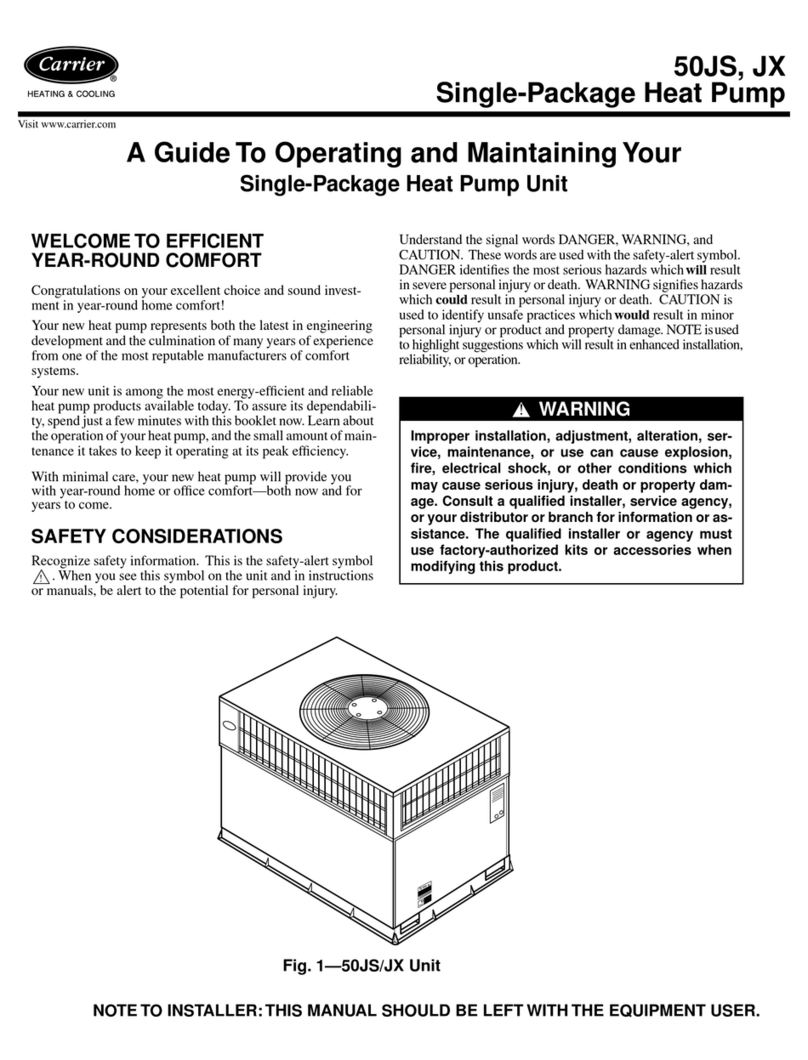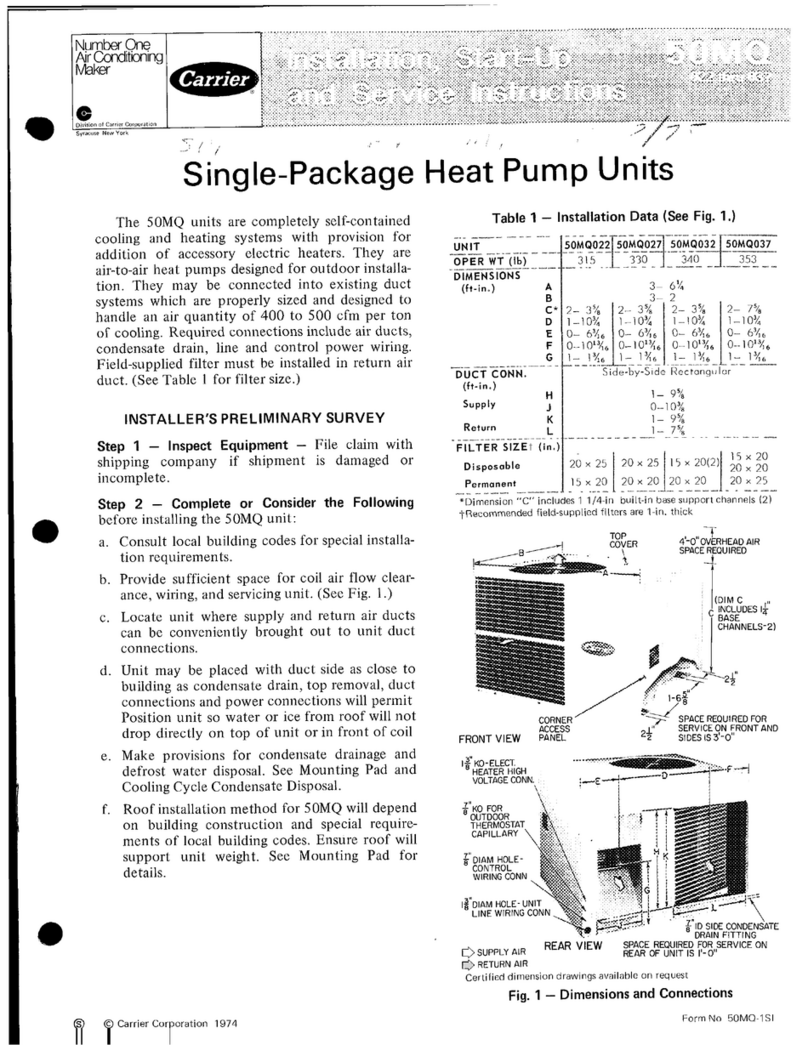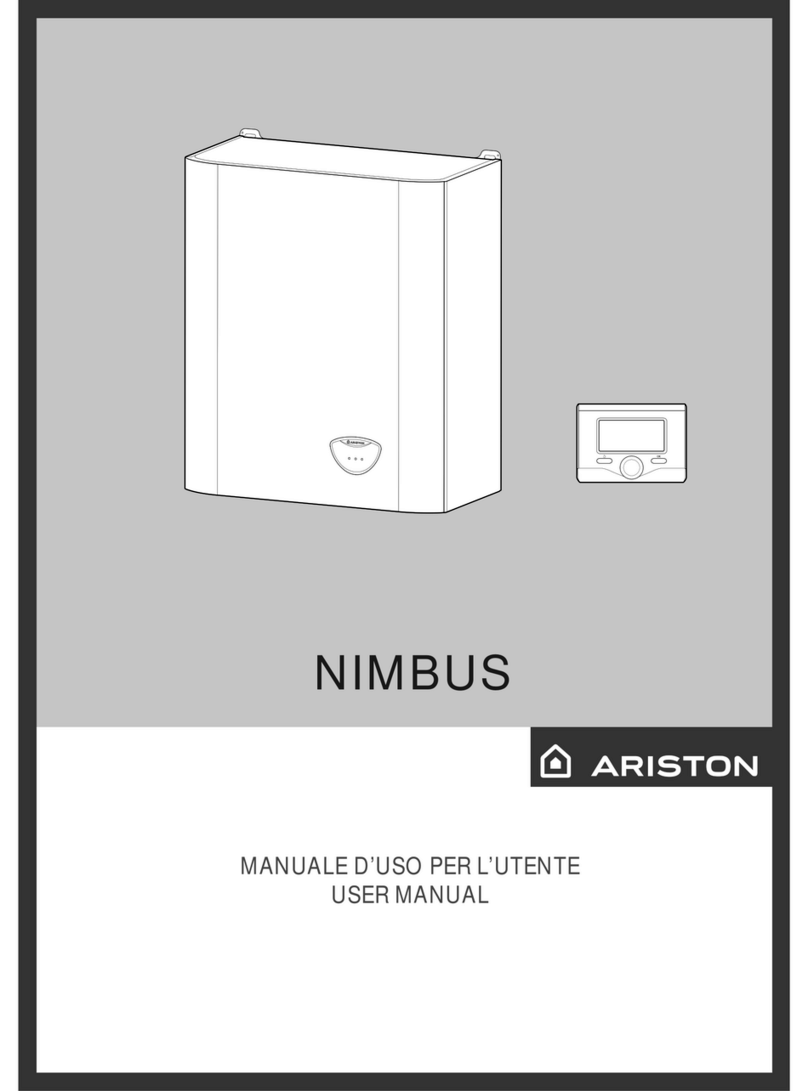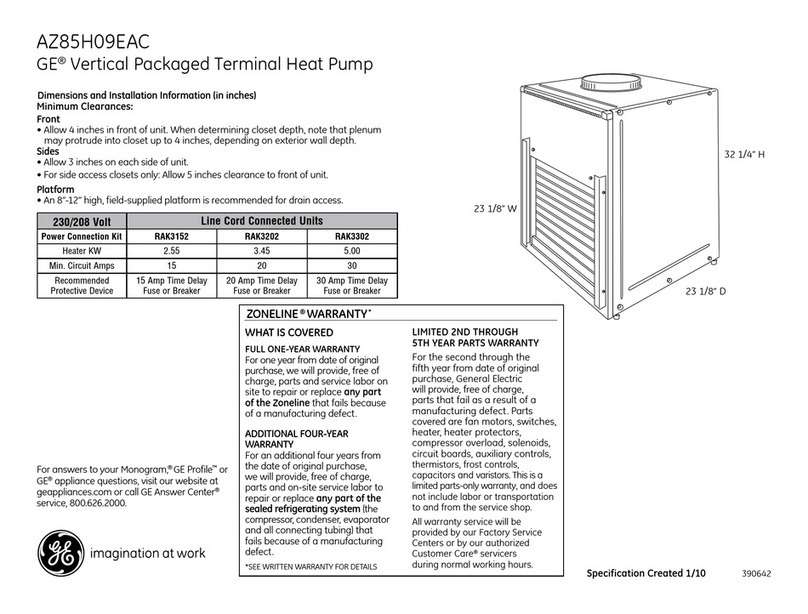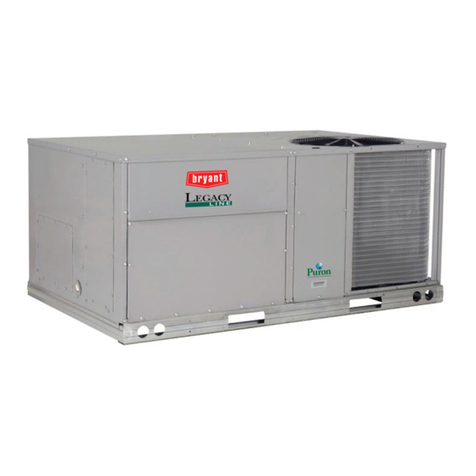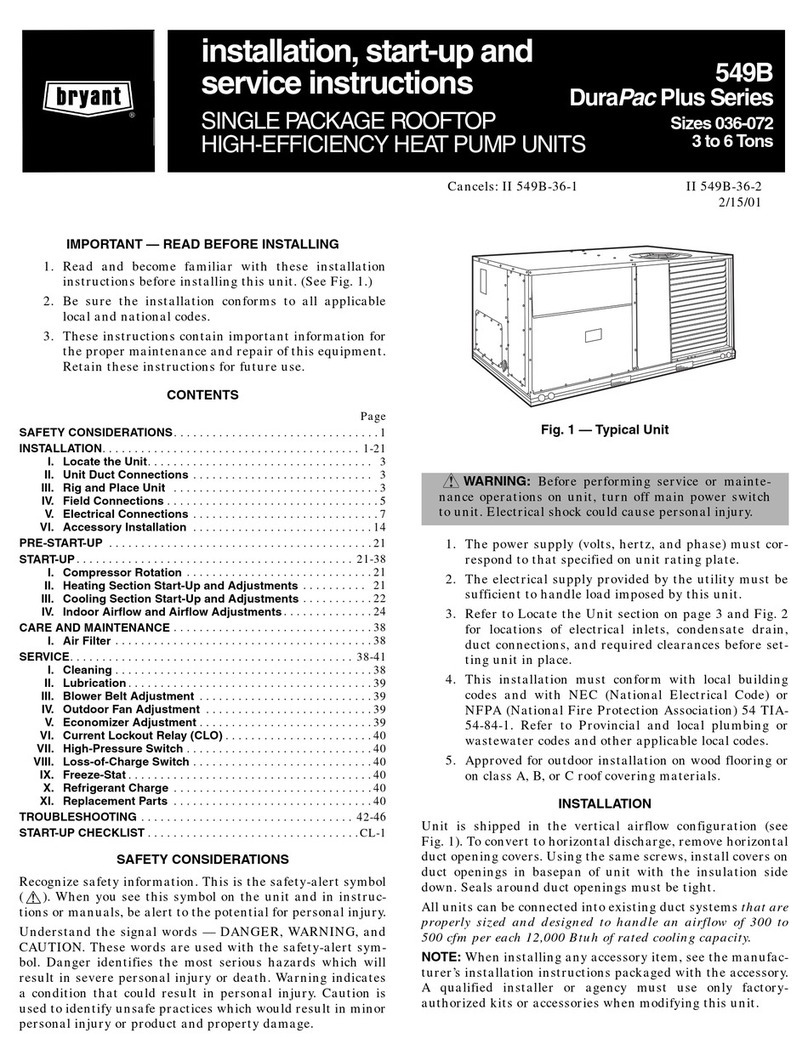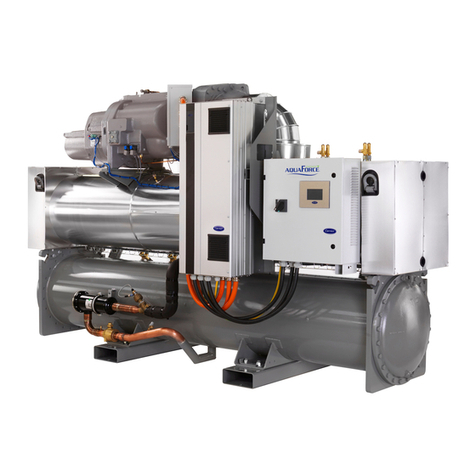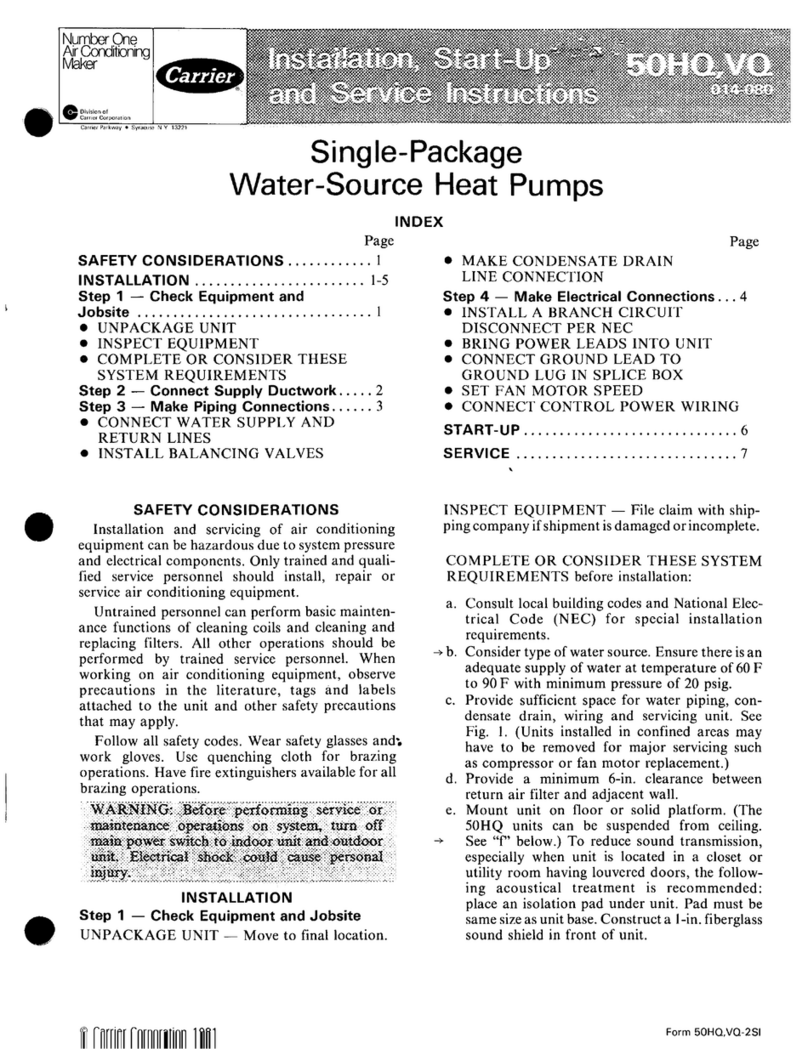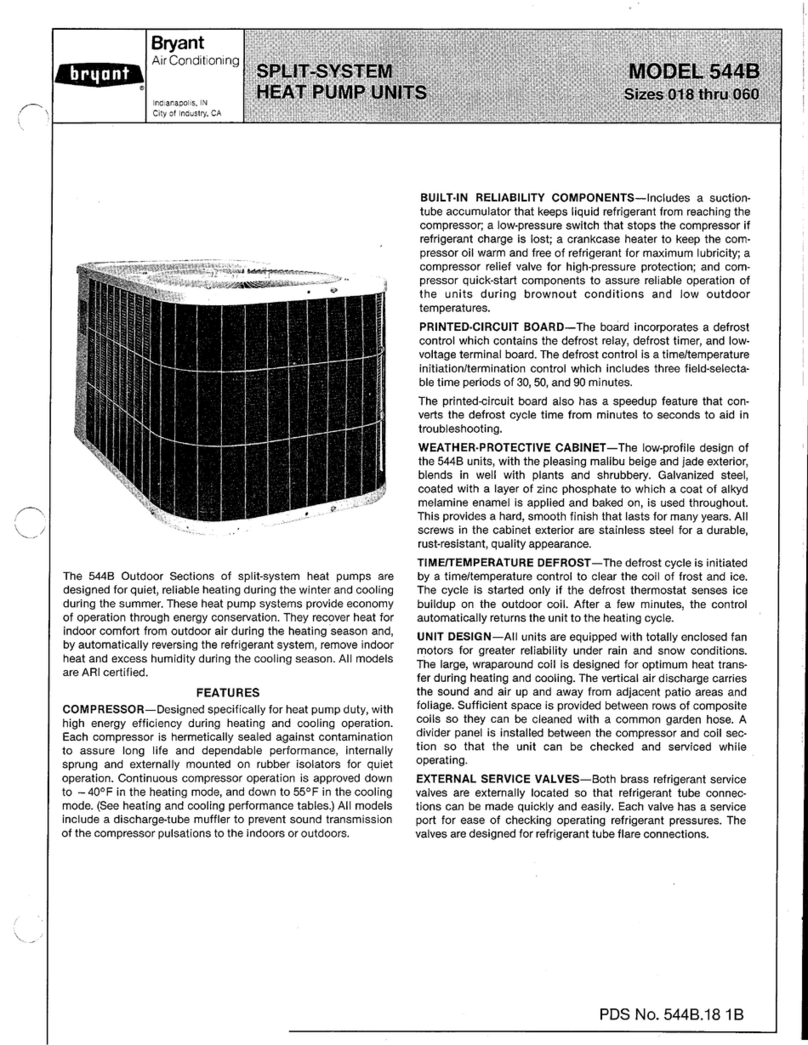
SAFETY CONSIDERATIONS
Installation and servicing of this equipment can be hazardous due to
mechanical and electrical components. Only trained and qualified
personnel should install, repair, or service this equipment.
Untrained personnel can perform basic maintenance functions such
as cleaning and replacing air filters. All other operations must be
performed by trained service personnel. When working on this
equipment, observe precautions in the literature, on tags, and on la-
bels attached to or shipped with the unit and other safety precautions
that may apply.
Follow all safety codes. Installation must be in compliance with lo-
cal and national building codes. Wear safety glasses, protective
clothing, and work gloves. Have fire extinguisher available. Read
these instructions thoroughly and follow all warnings or cautions
included in literature and attached to the unit.
Recognize safety information. This is the safety-alert symbol/_
When you see this symbol on the unit and in instructions or manuals.
be alert to the potential for personal injury.
Understand these signal words: DANGER, WARNING, and CAU-
TION. These words are used with the safety-alert symbol. DAN-
GER identifies the most serious hazards which will result in severe
personal injury or death. WARNING signifies hazards which could
result in personal injury or death. CAUTION is used to identify un-
safe practices which may result in minor personal injury or product
and property damage. NOTE is used to highlight suggestions which
will result in enhanced installation, reliability, or operation.
Note: Installer: This manual should be left with the equipment user.
FOR YOUR SAFETY
Failure to follow this caution may result in personal injury.
Do not store or use gasoline or other flammable vapors and
liquids in the vicinity of this or any other appliance.
FIRE, EXPLOSION, ELECTRICAL SHOCK HAZARD
Failure to follow this warning could result in personal injury,
death or property damage.
Do not use this unit if any part has been under water.
Immediately call a qualified service technician to inspect the
unit and to replace any part of the control system which has
been under water.
ELECTRICAL SHOCK HAZARD
Failure to follow this warning could result in personal injury,
death or property damage.
When removing access panels or performing maintenance
functions inside your unit, be aware of sharp sheet metal parts
and screws. Although special care is taken to reduce sharp
edges to a minimum, be extremely careful when handling
parts or reaching into the unit.
UNIT INTRODUCTION
This 48EZ unit is a small packaged gas heat/electric heat pump sys-
tem that can utilize both the efficiency of heat pump heating and the
comfort of gas heating. The system will optimize for ideal heating,
depending on several factors. This unit uses Puron'_Z_, the ozone
friendly refrigerant, for cooling and heat pump heating.
Starting or Shutting Off Unit
To start the unit:
1. Turn on the electrical power supply and gas to unit.
2. Select desired temperature on thermostrat and set SYSTEM
switch or MODE control to desired mode.
To shut off unit:
Note: If the unit is being shut down because of a malfunction, call
your dealer as soon as possible.
1. Set system SWITCH or MODE control to OFF.
2. Turn offthe electrical power, install lock-out tag and shut off
gas supply to unit.
OPERATING YOUR UNIT
The operation of your unit is controlled by the indoor temperature
control (for 48EZ, either a Thermidistat " or Hybrid Heat thermo-
stat is required). You simply adjust the thermostat and it maintains
the indoor temperature at the level you select. Most thermostats of
heating and cooling systems have 3 controls: a temperature control
selector, a FAN control, and a SYSTEM or MODE control. Refer
to your thermostat owner's manual for more information.
To better protect your investment and to eliminate unnecessary ser-
vice calls, familiarize yourself with the following facts:
1. During heat pump heating, increasing the thermostat setting
more than 2°F may cause the supplemental gas heat to be
turned on for a short period of time to satisfy the thermostat.
Needless use of the supplementary heat reduces potential
energy savings.
2. Ice or frost tends to form on the coil during winter heating
operation. Your heat pump is designed to automatically melt
the ice. When in this defrost cycle, it is normal for steam
or fog to rise from the outdoor unit. Do not be alarmed[
Step 1--Cooling Mode
With the SYSTEM control set to COOL, your unit will run in cool-
ing mode until the indoor temperature is lowered to the level you
have selected. On extremely hot days. your unit will run for longer
periods at a time and have shorter "off' periods than on moderate
days.
Step 2--Heat Pump Heating Mode
With the SYSTEM or MODE control of your idoor thermostat set
to HEAT, your unit will run in heat pump heating mode until room
temperature is raised to the level you have selected. Of couse, your
system will run for longer periods to maintain a comfortable envi-
ronment on cooler days and nights than on moderate ones.
Step 3--Gas Heat Mode
Your heat pump is your primary heating source. Your system is also
equipped with a supplemental gas heating source. On cold days and
nights, your system will automatically turn on the suppmental heat
in order to maintain the level of comfort you have selected.
When your heat pump needs additional heat to keep you comfort-
able, your Carrier electronic thermostat will turn on the supplemen-
tal gas heat and display the "AUX HT" message.
Step 4_Defrost Mode
When your heat pump is providing heat to your home or office and
the outdoor temperature drops below 45°F (7.2°C), moisture may
begin to freeze on the surface of the coil. If allowed to build up, this
ice would impede airflow across the coil and reduce the amount of
heat absorbed from the outside air. So. to maintain energy-efficient
operation, your heat pump has an automatic defrost mode.
